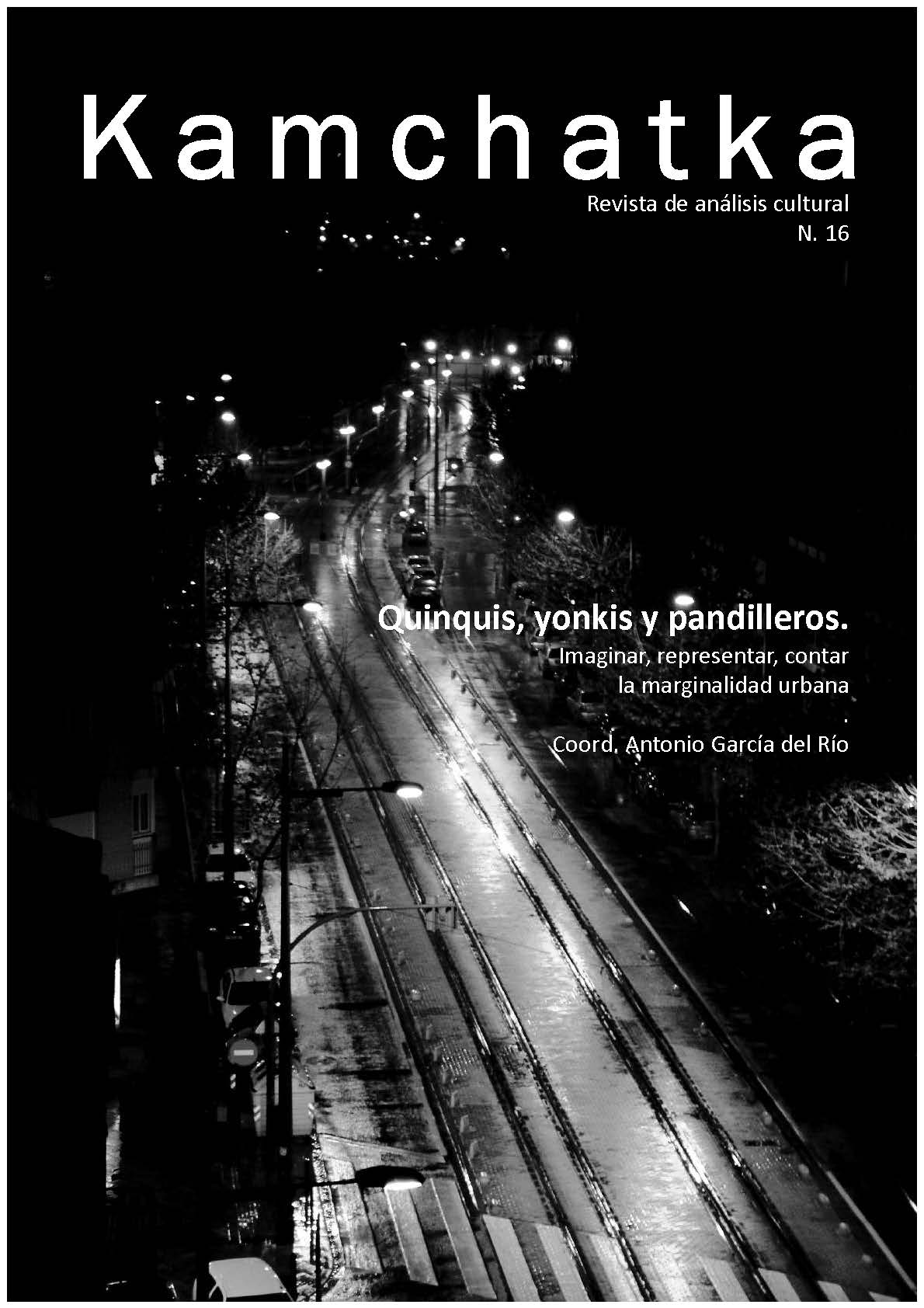The identity at stake: an autofictional approach to The House on Mango Street
DOI:
https://doi.org/10.7203/KAM.16.17259Keywords:
The House on Mango Street, autofiction, Chicana literature, identity, space, alterity, wild zone, poetic Abstract
Abstract
This article explains the autofictional construction of The House on Mango Street, literary work of the Chicana Sandra Cisneros. It is based on the theoretical basis that considers autofiction as a genre not subordinated to others, following the position of Vera Toro. It elaborates a study of the key elements of the poetic work, as well as the sociohistorical conditions in which it got written. It also analyzes how space is the fundamental narrative element that allows us to establish a relationship between literary creation, the creation of the identity of the Chicano people and the female narrator from the piece. In this study we are also taking into account the text’s strong critical character: on one side, we observe the Chicana identity at a community level, meeting this dynamic and hybrid or interstitial space, as Homi Bhabha conceptualizes it. On the other side, we see this identity enunciated from a feminine subject / alterity point of view or even from let’s say feminine alterities, bringing into dialogue this intermediary place with the paradoxical wild zone that entails Esperanza Cordero’s narration.
 Downloads
Downloads
 References
References
Alberca, Manuel (2007). El pacto ambiguo. De la novela autobiográfica a la autoficción. Madrid: Biblioteca Nueva.
Anaya, Rudolfo, Lomelí, Francisco A (1991). Aztlán: Essays on the Chicano Homeland. Alburquerque: University of New Mexico Press.
Anzaldúa, Gloria (1987). Borderlands/La Frontera. The New Mestiza. San Francisco: Aunt Lute Book.
Arteaga, Alfred (1997). Chicano Poetics. Heterotexts and Hybridities. New York: Cambridge University Press.
Bachelard, Gaston (1993). La poética del espacio. Madrid: Fondo de Cultura Económica.
Baker, Sean (2017). The Florida Project. Estados Unidos: Cre Film / Freestyle Picture Company / June Pictures.
Barthes, Roland (1987). El susurro del lenguaje. Más allá de la palabra y de la escritura. Barcelona: Paidós.
Bhabha, Homi K (2013). El lugar de la cultura. Buenos Aires: Manantial.
Casas, Ana (2014). “La autoficción en los estudios hispánicos: perspectivas actuales”. Casas, Ana (ed.). El yo fabulado. Nuevas aproximaciones críticas a la autoficción. Frankfurt: Iberoamericana: 7-21.
Casas, Ana (2015). “Desmontando al autor: ironía, parodia y sátira en la narrativa y el cine autoficcionales”. Tropelías. Revista de Teoría de la Literatura y Literatura Comparada 24 (2015): 174-190.
Cañero, Julio (2017). Literatura Chicana. La experiencia colonial interna en las obras de Rudolfo Anaya. Madrid: Instituto Franklin UAH.
Cañero, Julio. “Esperanza’s transcendence: sense of community in Cisneros’ The House on Mango Street”. REDEN: Revista española de Estudios Norteamericanos 17-18 (1999): 101-112.
Chávez Candelaria, Cordelia (1993). “The “Wild Zone” Thesis as Gloss in Chicana Literary Study”. Alarcon, Norma, Castro, Rafaela, Pérez, Emma, Pesquera, Beatriz, Sosa Riddell, Adaljiza, Zavella, Patricia (eds.). Chicana critical issues. Oakland and Saline: Third Woman Press: 21-33.
Cisneros, Sandra (1984). The House on Mango Street. New York: Vintage Books.
Cisneros, Sandra (1994). La Casa en Mango Street. New York: Vintage Español.
De la Torre, Mario (2017). La autoficción como método de protesta: prácticas teatrales y cinematográficas en el ámbito hipánico.
Deleuze, Gilles, Guattari, Félix (2014). El Anti-Edipo. Capitalismo y esquizofrenia. Barcelona: Paidós.
Deleuze, Gilles, Guattari, Félix (2004). Mil mesetas. Valencia: Pre-Textos.
Foucault, Michel (2003). “¿Qué es un Autor?”. Repositorio Institucional de la Universidad de los Andes.
Gutiérrez, Armando y Hirsch, Herbert. “The militant challenge to the american ethos: “Chicanos” and “Mexican Americans””. Social Science Quarterly 53 (1973): 830-845.
Hadad, Gisela, Gómez, César (2007). “Territorio e identidad. Reflexiones sobre la construcción de territorialidad en los movimientos sociales latinoamericanos”. Acta Académica.
L. Madsen, Deborah (2000). Underestanding contemporary Chicana literature. Columbia: University of South California Press.
Mesa Gancedo, Daniel. “La imagen del yo en la novela-diario femenina del siglo XXI: Todos se van, de Wendy Guerra”. Mitologías hoy 10 (2014): 145-15.
Nkrumah, Kwame (1966). Neocolonialismo. Última etapa del imperialismo. México D.F: Siglo XXI Editores.
Olivares, Julián. “Sandra Cisneros: The House on Mango Street and The Poetics of Space”. The Americas Review 15 (1987): 160-170.
Smith, Claire. “La reescritura de la imagen chicana desde los espacios liminares de The House on Mango Street”. La BloGoteca de Babel. 6 (2016): 1-31.
Spoturno, María Laura. “Las paremias como puentes interculturales en Caramelo de la autora chicana Sandra Cisneros”. Paremia (2009) 18: 121-130.
Toro, Vera (2017). Soy simultáneo. El concepto poetológico de autoficción en la narrativa hispánica. Madrid: Iberoamericana.
Downloads
Published
How to Cite
-
Abstract1048
-
Artículo PDF (Español)509
Issue
Section
License
This journal provides an immediate free access to the content on the principle that freely make investigation available to the public, which promotes an increased global knowledge exchange.
Unless otherwise indicated, texts published in this journal are under the license Attribution-NonComercial 4.0 by Creative Commons. These texts may be copied, distributed and publicly communicated whenever the publication’s author and title are quoted and whenever they are not used for commercial purposes. In any case, intellectual property of the articles and its potential economic rights entirely belong to its authors.
The full license can be consulted on https://creativecommons.org/licenses/by-nc/4.0/. We encourage authors to disseminate papers published in Kamchatka. Journal of cultural analysis electronically, in institutional digital repository or in their websites.





